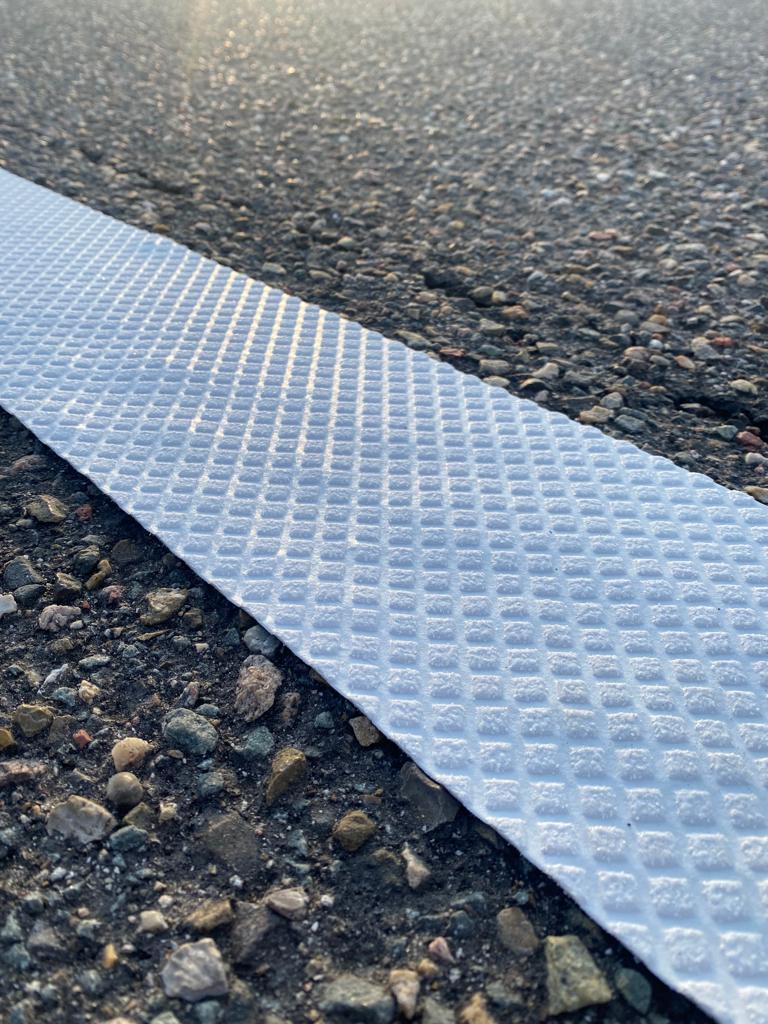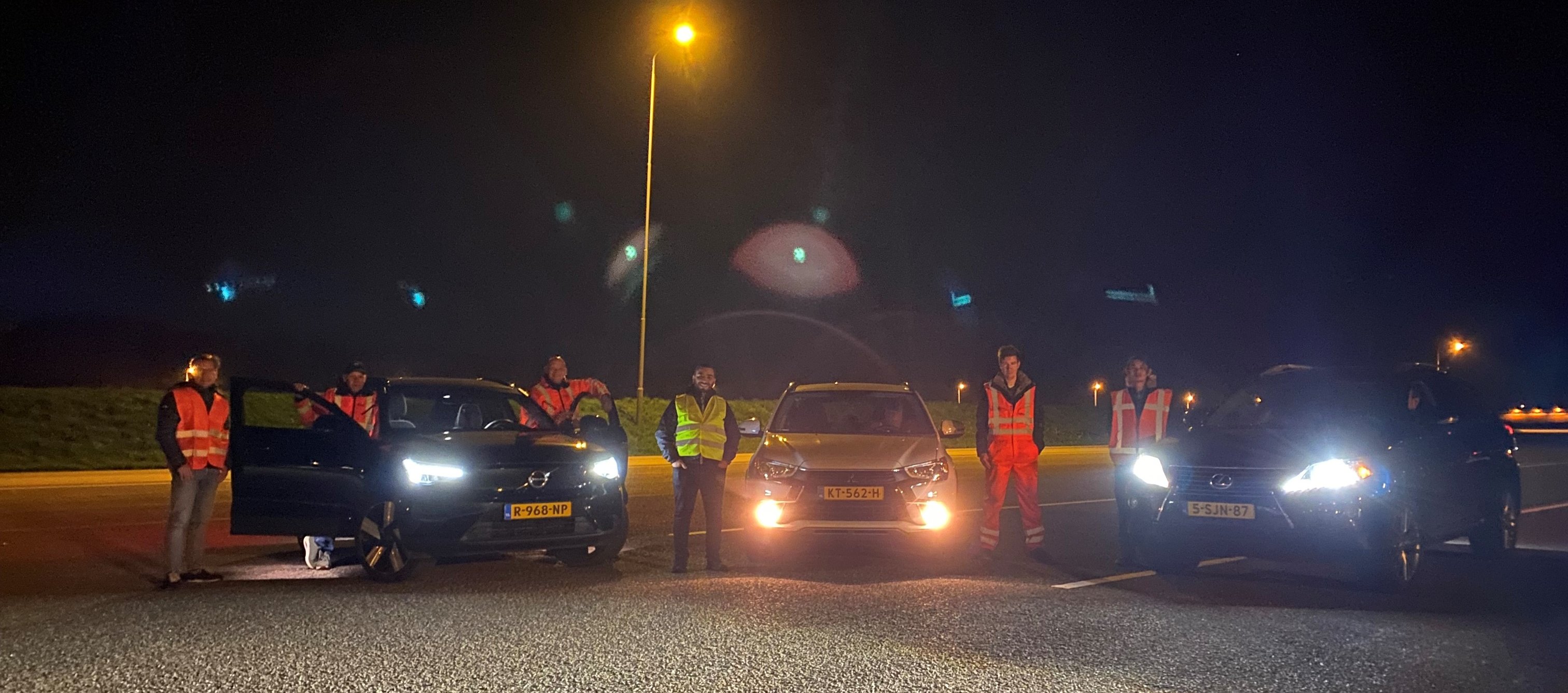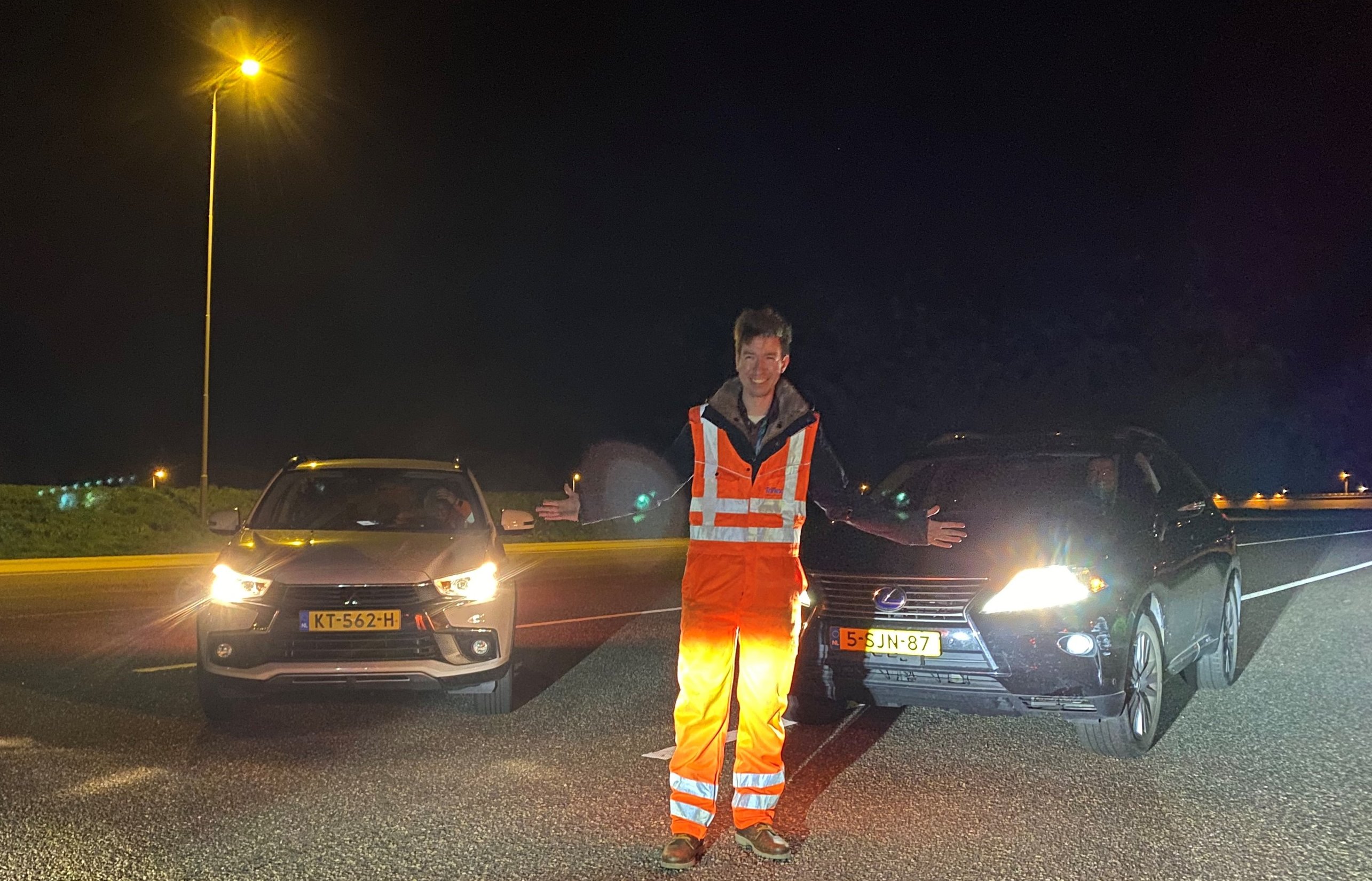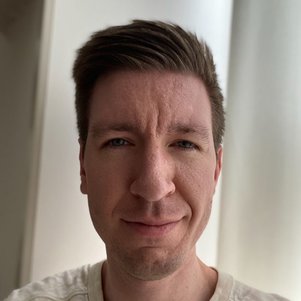It’s a drizzly late afternoon and you’re driving home. The rain stops and as you negotiate the next bend the rays of the setting sun hit you straight in the eyes. Dazzled, you try to keep the car from veering off but it’s not easy. Suddenly you feel the car’s lane-keeping system kicking in. Phew, that was close...
The weather and other factors can have a dramatic impact on the visibility of road markings and we can’t always rely on our cars to help us out of a scrape. For his master thesis, Civil Engineering master student Mathijs den Otter decided to focus on a method to test the visibility of road markings affected by external influences such as rain and low sun. And where better to do it than on the race track?
What exactly was the subject of your research?
The detectability of different types of road markings in a range of circumstances. Road markings can be detected by Lane Keeping Assistance (LKA) systems which monitor the position of your car and keep it within the lane boundary. But there are situations in which the car’s cameras and sensors no longer recognise the markings, for instance in the dark, or when it’s pouring down and there is a lot of oncoming traffic. What I did on the race track was to use different cars and cameras to find out which markings could no longer be detected, depending on a range of conditions.
Why is this important?
There are situations in which an LKA system can prevent an accident from happening. Imagine you’re on an N road and it’s raining and you’re tired. You fail to see the next bend in time and before you know it you end up driving into the roadside verge. If the LKA system had kicked in at just the right moment the car would have stayed on course and nothing would have happened. The driver has to activate the system so it’s not a guarantee accidents won’t happen but it can contribute to road safety.
Can you describe your research method?
Initially, I was interested in doing tests related to the visibility of road markings. I knew from existing literature that there had been several experiments, carried out on public roads or using simulators. Simulators are good for testing human reactions and behaviour but not so much for the detection of markings by LKA systems. Tests on public roads may be realistic but the conditions are not controlled and you would have to do with the situations that present themselves. The race track allowed me to create different scenarios. We decided beforehand which variables could be included and what would remain unchanged. We used the RWD test lane in Lelystad to experiment with four different road markings, driving three different cars on 200-metre stretches, both by day and by night. The lane was fitted with motorway lampposts and a system to wet the surface. I used cameras trained at the dashboard to see when the LKA systems kicked in and when they didn’t. On-site measuring equipment determined the degree of contrast between the markings and the asphalt, and how visible they were in the lamplight. I then synchronised the camera footage and tabulated the detection results. That gave me several Excel sheets of data covering all the runs, some 400 in total. I am now at the point where I will analyse the results and look at the connection between the variables, and how they affect detectability.
What did you look forward to most?
The time spent on the race track. We were there for two days, from 4 pm to 2 am, with a team of 10 to 15 people from different organisations who were all involved in the testing at some point. Everything worked out as planned and everyone worked well together, which was great. The weather was excellent as well, so we couldn’t have asked for more.
What was your biggest challenge?
The logistics of the research set-up because such a lot of people were involved. Organising the practical stuff, such as making sure everyone agreed on the testing dates and then making sure the track was available.. We also had to make fairly sure it would be dry so we could paint the markings on the lane surface. Fortunately, the weather was fine and it was not a problem.
What is the most important thing you learned?
I learned what it takes to mount a research project effectively with a group of people and take it forward. You have to recognise your own part in this and when you do you will see that you can make others as enthusiastic about the project as you are. You also need to be flexible. Not everything will go exactly the way you think it will. I have learned to let go and adapt.
What did you enjoy most?
Putting the pieces of the puzzle together. It may sound a bit vague but when I started this project I imagined it as a big mountain without an obvious foothold to start the climb. As time went on and we had done the testing, things began to fall into place. It was nice to feel more on top of the project as it progressed.
What is the next step?
My research is part of SAMEN, a project that has involved other graduates and PhDs in the past. It will be concluded this year but there is plenty of scope for follow-up research into automatic vehicles and car systems. It will be particularly interesting to find out more about the effect on the cameras of the angle of oncoming car headlights and road lampposts. It may also be useful to repeat the tests but with a focus on the driver. What if the LKA system doesn’t recognise a marking, or the driver has turned off the system? Do drivers experience the visibility in the same way the system would, or do other criteria come into play? No two drivers are the same: older drivers may perhaps not have the same degree of visual acuity but they are generally more careful. The camera doesn’t take speed into account. It would be interesting to explore this further.
Tell us about your plans for the future
I’m currently working for a data company in the field of sports. It’s miles away from Civil Engineering but I would really like to combine the two. I still have to get my head around how I’ll manage the hours. But once I have graduated the first thing I’m going to do is to travel to South America for a long holiday. It’s a good idea to take the time to figure out what you really want to do so you don’t end up in a job you don’t like.
Study-related
Why did you opt for Civil Engineering in general and Transport and Planning in particular?
Civil Engineering covers a very broad spectrum of disciplines. When I left school I didn’t quite know what I wanted to do and I liked the fact that it offered a lot of possibilities. And I had always been fascinated by big projects. During my bachelor, I discovered I liked the dynamic side of Civil Engineering best, anything to do with movement. I had a hard time choosing between water management and transport but landed on the side of Transport and Planning because it’s something that’s all around you. Transport is everywhere, something not every user is aware of except if their train is late yet again, or they’re stuck in a tailback.
In what way did your Civil Engineering bachelor help you?
Analytical thinking, writing reports, and working with different people and parties were some of the skills I picked up, and they came in handy.
Which parts of your Civil Engineering master did you apply?
Graduating is different from going to class and doing exams, that much I know. You pick up some skills but there was a lot of specific knowledge which I did not need. But I did learn how to set up a research project, and collect and process data, and that was very useful indeed. Several subjects required a sort of mini-thesis, including rapportage and research design. That helped me prepare for my MSc thesis research.







